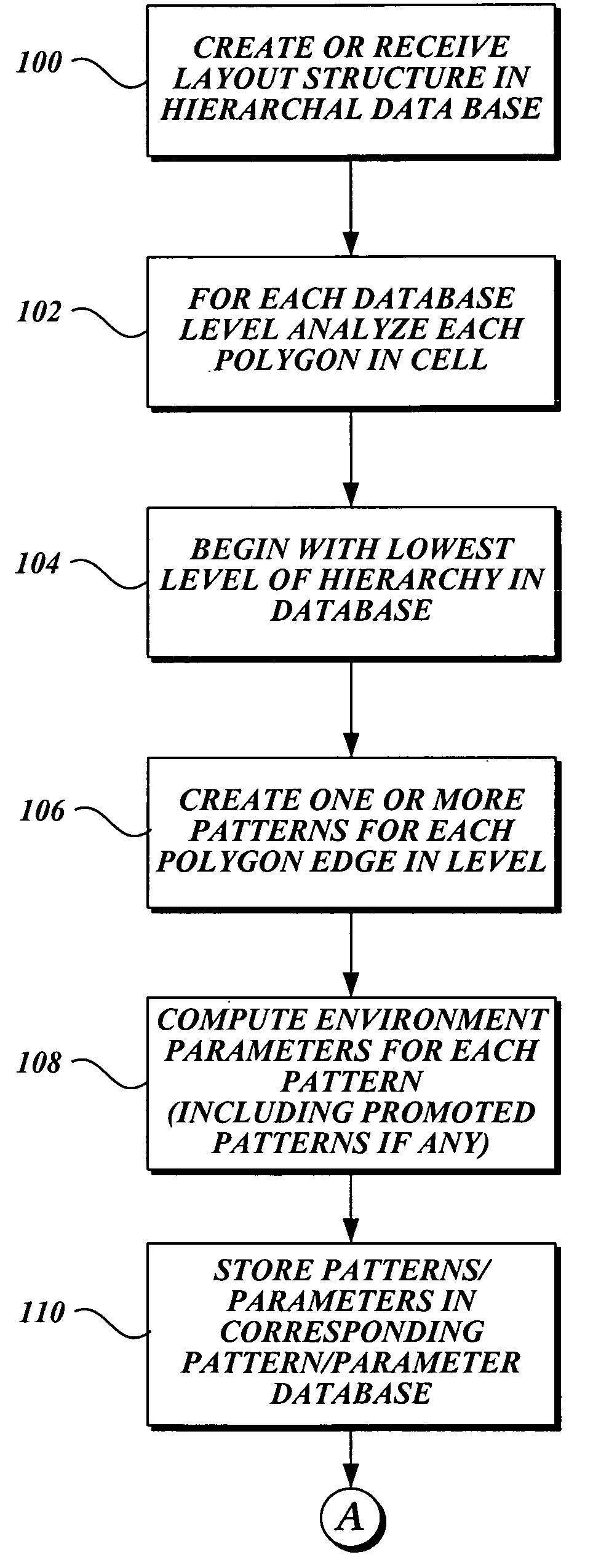Hierarchical feature extraction for electrical interaction
a technology of electrical interaction and feature extraction, applied in the direction of electric digital data processing, instruments, computing, etc., can solve the problems of large amount of memory and computer time to analyze, and the circuit as designed on the computer will not perform as anticipated
- Summary
- Abstract
- Description
- Claims
- Application Information
AI Technical Summary
Benefits of technology
Problems solved by technology
Method used
Image
Examples
Embodiment Construction
[0020]FIG. 1 is a simplified representation of a cross-section of a portion of an integrated circuit. An integrated circuit 10 includes a substrate 12 and a number of conductive circuit elements formed in layers above the substrate 12. Many of the features or elements, such as those labeled A and B are repeated in the integrated circuit. Other elements, such as that labeled D, may appear only once in the circuit layout.
[0021] As will be appreciated by those skilled in the art of circuit design and modeling, capacitances may be created between the circuit elements due to their area and the physical proximity to one another. When not blocked by an intervening element, each element in the circuit may have a plate capacitance between it and the substrate 12. For example, element 16 has a plate capacitance 18 that can be modeled as a capacitor connected between the lower surface of the element 16 and the substrate 12. In addition, the vertical edges of each element create fringe capacit...
PUM
 Login to View More
Login to View More Abstract
Description
Claims
Application Information
 Login to View More
Login to View More - R&D
- Intellectual Property
- Life Sciences
- Materials
- Tech Scout
- Unparalleled Data Quality
- Higher Quality Content
- 60% Fewer Hallucinations
Browse by: Latest US Patents, China's latest patents, Technical Efficacy Thesaurus, Application Domain, Technology Topic, Popular Technical Reports.
© 2025 PatSnap. All rights reserved.Legal|Privacy policy|Modern Slavery Act Transparency Statement|Sitemap|About US| Contact US: help@patsnap.com



